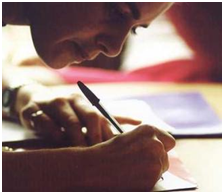
Lesson 3: A Proofreader’s Job
Objectives:
- To provide a short introduction to proofreading
- To enumerate the different tasks and responsibilities of a proofreader
- To enumerate the different limitations of a proofreader’s job
Quick Navigation through the Lesson 3:
- Correcting Technical Errors
- Comparing Revisions
- Cross-checking Format
- Evaluating Over-all Status
- Knowing Your Limit
 In our last lesson, we were able to identify the different tools that we use throughout the process of proofreading to make the process quick, effective and efficient. In this lesson we’re going to be looking at the different responsibilities of a proofreader—this will help set your expectations. It will also aid you in recognizing the different roles that you’ll need to fulfill to be able to become the best proofreader you can be. These different points are outlined below:
In our last lesson, we were able to identify the different tools that we use throughout the process of proofreading to make the process quick, effective and efficient. In this lesson we’re going to be looking at the different responsibilities of a proofreader—this will help set your expectations. It will also aid you in recognizing the different roles that you’ll need to fulfill to be able to become the best proofreader you can be. These different points are outlined below:
Correcting Technical Errors
As a proofreader, you’ll be tasked with correcting technical errors within a document—you’ll be asked to comment on the grammar, punctuation, sentence construction, spelling and organization of the paragraphs. To be able to do your best as a proofreader, you should ensure that you’re well-versed in these technicalities. Keeping a grammar book or a trusted reference nearby (some of these data bases can now be accessed online) will also help you do your job well while making your life as a proofreader easier.
Comparing Revisions
When lengthy writing is involved—whether at school or at work—one typically goes through numerous drafts. As a proofreader, you will be tasked with comparing each upcoming draft and the previous one. Because of this, you should be keen on the nuances of every draft (which parts were added, which parts were removed) as well as which changes were made on your recommendation and which ones were made without (or in spite of) your recommendations. This will help you evaluate whether these changes were made for the better and whether further alterations need to be made for the paper. Because of this, it’s best to save every draft (both with and without comments) which you’re working on—whether by keeping a copy on your computer or by filing away the previous draft.
Cross-checking Format
Proofs or drafts are usually written for a certain rigid structure: at school, papers are written in their corresponding formats depending on the topic and the requirement whereas at different offices, the format might pertain to an e-mail format or a certain document format (e.g. annual report, brochure, etc.). Because proofreading focuses mostly on the technical aspects of writing, this is encompassed by your duties as a proofreader. You should be familiar with the technicalities of whichever format you’ll be dealing with to best carry out your duties as a proofreader.
[WpProQuiz 214]
Evaluating Over-all Status
Once the final draft is in or once you feel like there are no more errors that need to be fixed, you should also be keen on the over-all status of the work. Is it ready to be submitted to your higher-ups? Does it meet the standards set for you? To aid you in making this call, it might be advisable to give the paper a once-over before submission.
Knowing Your Limit
Now that we’ve discussed what your job is as a proofreader, we’ll also be briefly discussing what it isn’t. Right off the bat, a proofreader doesn’t write the paper or apply the corrections directly onto the work—unless, of course, you are proofreading your own written output. As a proofreader, it’s your job to make comments and to point out corrections: not to revise the work yourself (unless specifically asked to). It is also your responsibility to make your professional limitations clear—for example, some proofreaders might be asked to proofread HTML code as well; if you are not well-versed in this area, make sure to declare it at the beginning of the project so as to set expectations and avoid confusion and miscommunication.
In this lesson, we were able to discuss the different responsibilities of a proofreader. We were also able to look at the limitations of the proofreading job and how to best work within these parameters. These were illustrated through five short but informative points, as seen above.
Try Our Exercise And and Prep Yourself for the Real Thing
Next up we’ll be discussing the different roles and responsibilities of a copyeditor. We’ll be defining copyediting and also briefly touching on how this differs from proofreading. Keep reading and we’ll be well on our way to achieving proficiency and success as proofreaders and copyeditors!
 + 1-888-827-0150
+ 1-888-827-0150 + 44-20-3006-2750
+ 44-20-3006-2750










